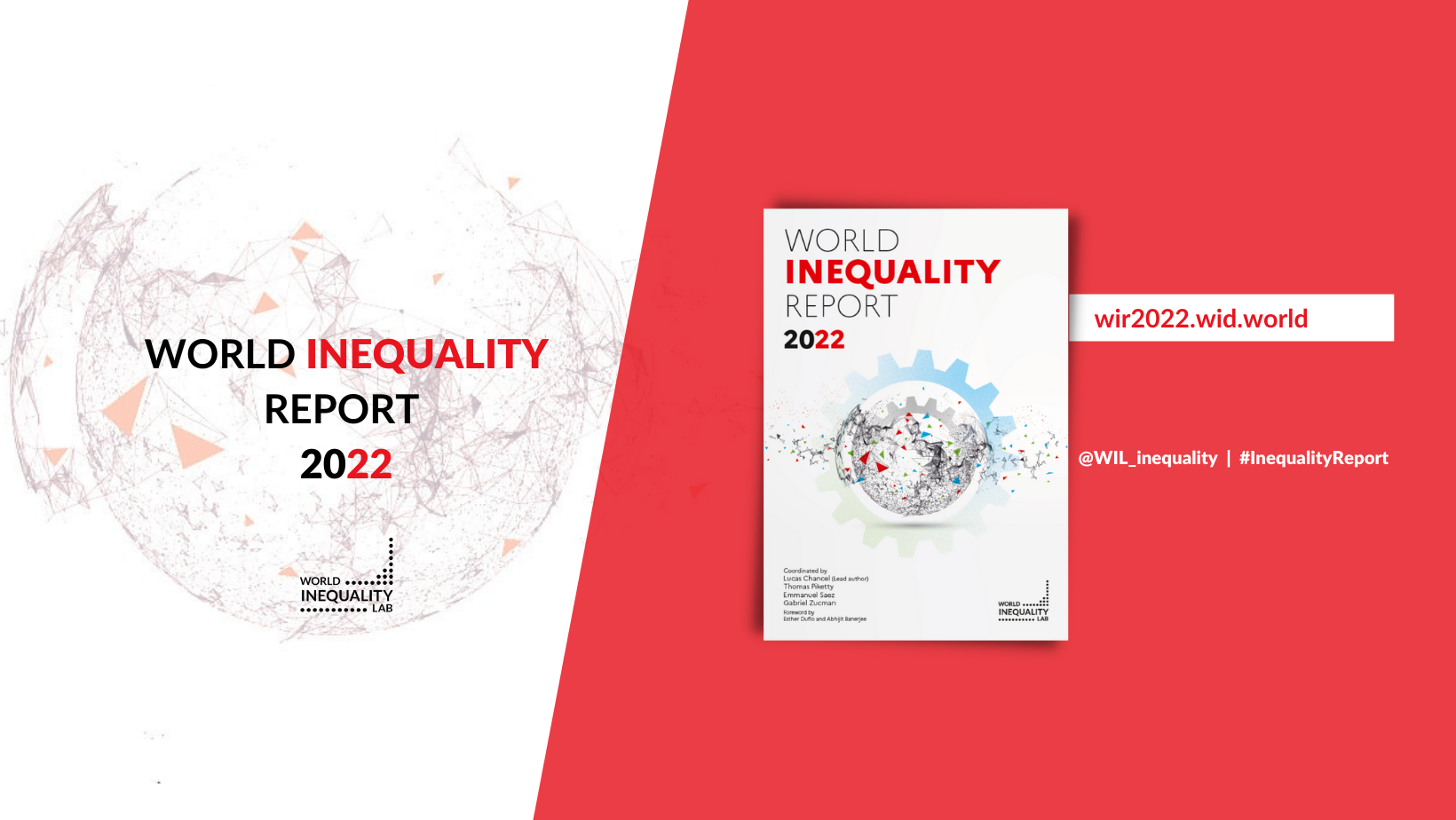World Inequality Report 2022

World Inequality Lab has released the World Inequality Report 2022. This report is based on the World Inequality Database and is the culmination of four years of work contributed by more than 100 researchers. The World Inequality Report 2022 presents the most up-to-date and comprehensive data on the various facets of inequality in the world: global wealth, income, gender and ecological inequality.
The picture presented by the report presents a world with wide inequalities in income and wealth both between and within countries. The richest 10% of the world's population currently holds 52% of global income, while the poorest half of the population earns 8.5%. Global wealth inequalities are even more pronounced than income inequalities. The poorest half of the world's population has almost no wealth, owning only 2% of the total. By contrast, the richest 10% of the global population own 76% of all wealth.
Progress on gender equality is very slow and the current inequality in earnings between the sexes remains very high. Moreover, global income and wealth inequalities are closely linked to ecological inequalities and inequalities in contributions to climate change. Climate policies have affected the lower and middle classes much more, almost completely ignoring wealthier groups, although they are the main polluters.
Members of the World Inequality Lab stress that it will not be possible to face the multiple challenges of the 21st century without a significant redistribution of income and wealth inequalities. Reforms of the welfare state are needed to promote access to basic services such as health, education and opportunity, supported by a fair taxation system, explaining that inequality is a political choice.

